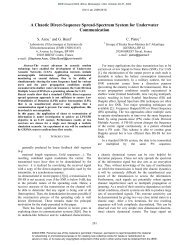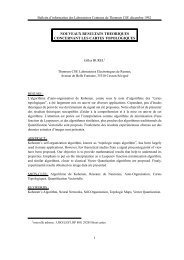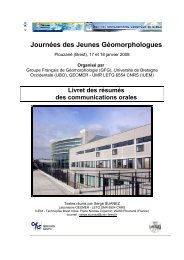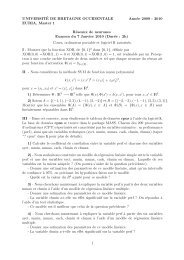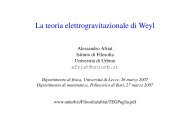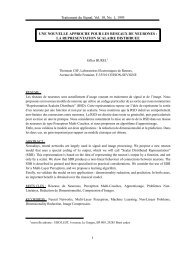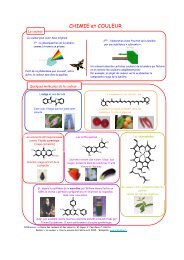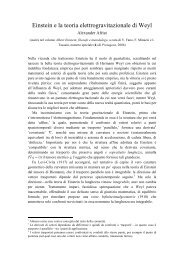Abstract 1 Introduction
Abstract 1 Introduction
Abstract 1 Introduction
You also want an ePaper? Increase the reach of your titles
YUMPU automatically turns print PDFs into web optimized ePapers that Google loves.
Battleeld Atmospherics Conference (BAC’93), Nov 30 - Dec 2, 1993, Las Cruces, New Mexico, USA<br />
It is clear that, at each step, the winner and its neighbours will move their weights<br />
in direction of the input vector x. Hence, the network’s dynamics could be seen as the<br />
result of an external force (adaptation to input vectors), and an internal force (the neighbourhood<br />
relations, that force nearby neurons to have close weights). Kohonen validated<br />
his algorithm on speech data, and showed that the neurons organize their weights in order<br />
to become representative of phonemes. Furthermore, topological relations are preserved<br />
(close neurons react to close phonemes).<br />
y<br />
Figure 4: Self-organization inside a triangle<br />
Properties of Kohonen’s algorithm may be illustrated on a simple example. Let us<br />
assume that the input vectors are of dimension 2, and that their components are coordinates<br />
of a point randomly selected inside a triangle. Each neuron has two weights, so we can<br />
represent it by a point in the 2D plane. Figure 4 shows the network state after learning.<br />
Hence, the neural network, that can be seen as a one dimensional curve, has performed an<br />
approximation of a 2D domain (the triangle).<br />
Kohonen’s algorithm may be easily generalized to higher network’s dimensions. For<br />
example, a 2D network is shown on gure 5.<br />
x<br />
6



